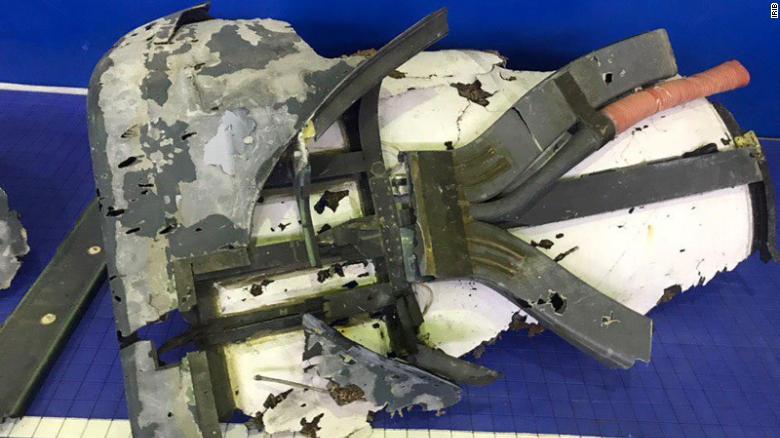The Middle East has become a nightmare for airlines

The latest headache for the global aviation industry came Thursday when Iran shot down an American surveillance drone, prompting the Federal Aviation Administration to ban US airlines from flying above parts of the Gulf of Oman and the Persian Gulf.The US agency said in an advisory that it was concerned about “heightened military activities and increased political tensions” in the region after Iran used a surface-to-air missile to down the drone “while it was operating in the vicinity of civil air routes.”Airlines were quick to take action. United (UAL) Airlines canceled its service between India and Newark through September 1, while carriers such as Qantas (QABSY), British Airways, KLM and Lufthansa (DLAKF) said they would adhere to the restrictions, meaning route changes for some flights bound for major hubs in Dubai, Doha and Abu Dhabi, as well as for planes transiting the area on routes to and from Asia. The situation is especially complicated for Emirates, Etihad and Qatar Airways, which operate a large number of long haul flights from those hub airports along the Persian Gulf. Emirates said Friday it was rerouting all flights away from “areas of possible conflict” and would make further changes if needed. Etihad said safety was paramount and the airline has “agreed to change a number of the flight paths we operate to and from the Arabian Gulf.”Rising costs and risksFor commercial airlines and freight carriers, flight restrictions mean taking the long way around, costing time and money. And nowhere is the disruption more apparent than the Middle East. Airlines have avoided flying over Syria in recent years, staying well clear of airspace patrolled by military aircraft. But they have also, at various points, avoided parts of Iran and Iraq. A civil war has made Yemen off limits since 2015, and a missile fired by Houthi rebels struck the arrivals hall of an airport in Saudi Arabia this month. Airlines also avoid the North Sinai, where Egypt is battling Islamist militants. “The Middle East has never been more complex for aircraft operators,” said Mark Zee, the founder of OpsGroup, an organization that monitors airspace for member airlines and controllers. “It’s got even more complex over the past six months. No matter which way you turn, a route has been cut off.”Yet a huge number of flights from European airports such as London, Amsterdam and Frankfurt must still traverse the Middle East on their way to Asian destinations like Bangkok and Singapore.”It’s a massive amount of traffic,” said Zee. “And there isn’t much of an alternative.”The additional miles flown to avoid trouble spots mean higher costs for airlines, which together spend $180 billion a year on jet fuel. An extra half hour in the air, repeated over the course of a year, means millions of dollars in extra costs. That’s to say nothing of the additional time passengers now have to allow for their journeys. Zee pointed to the example of flights between Amsterdam and New Delhi to illustrate the impact. Flights between the two cities would typically fly over Pakistan, but many have been skirting the country because of armed skirmishes with India. Yet Iran also sits alongside the flight path, meaning a second detour may now be required.The lesson of MH17The downing of Malaysia Airlines Flight 17 in 2014 prompted airlines and regulators to take a second look at the safety of flying over conflict zones. In that case, 298 people were killed when the plane was shot down by a missile while flying over a part of eastern Ukraine held by pro-Russian separatists. Some airlines had already determined that flying over the area was risky, and were avoiding it when MH17 was shot down. But scant sharing of information between airlines, regulators and governments meant that some carriers continued to send flights over eastern Ukraine. The industry is now applying some of the lessons learned from that disaster.In a notice sent to airlines on Thursday, the FAA said that flight tracking applications suggested the nearest civilian aircraft was within 45 miles of the US drone when it was targeted. The missile system used by the Iranians was likely capable of reaching up to 60,000 feet, roughly twice the cruising altitude of many commercial jets, the agency added.”FAA remains concerned about the escalation of tension and military activity within close proximity to high volume civilian air routes,” the agency warned. “There is concern about the potential for misidentification or miscalculation which could result in the inadvertent targeting of civil aviation.”There is precedent for such a miscalculation. In 1988, a missile fired from an American warship hit Iran Air Flight 655, killing 290 people. Zee said the quick action taken by regulators and airlines this week could prevent another disaster. “Within 24 hours, we’ve had a bulk of the major carriers all stop overflying this region,” he said “If there’s a good news part of this, it’s how quickly airlines are making risk-based decisions to avoid airspace.”Correction: An earlier version of this story gave an incorrect date for the downing of Iran Air Flight 655.




